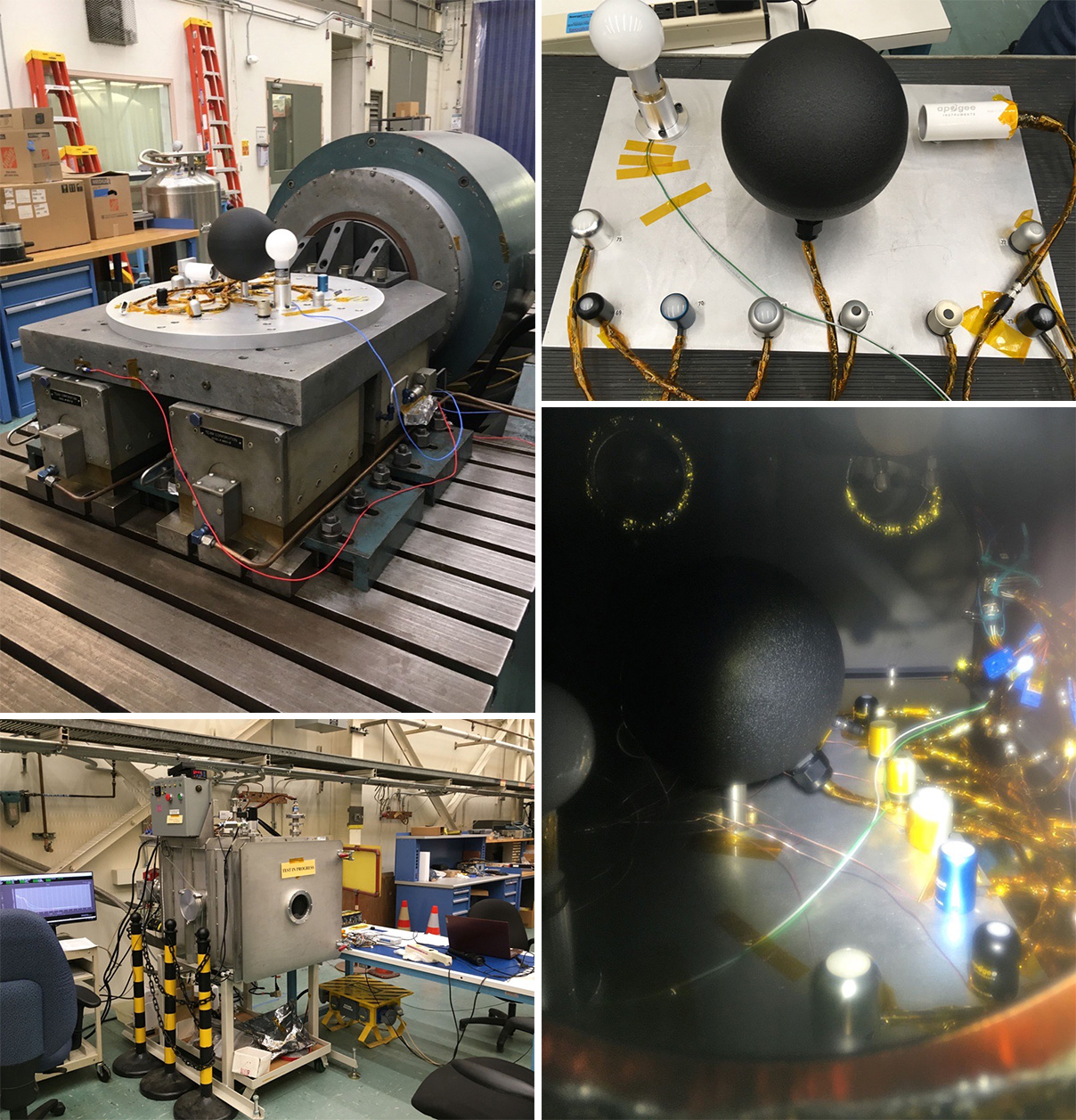Apogee in Outer Space
Apogee sensors could soon be taking a trip to the moon!
Apogee's revolutionary sensors are about to take a giant leap forward. NASA is currently testing our quantum and ePAR sensors, pyrgeometers, pyranometers, and infrared radiometers in a rigorous vacuum and vibration test to ensure the sensors can withstand the extreme conditions of space flight and rocket launch.
But did you know this is not the first time Apogee sensors have gone to space? Twenty years ago our sensors were used on the International Space Station to monitor USU-Apogee Wheat growth from April to June 2003. Our sensors have only improved over the last 20 years, and we are excited to have our sensors go to space again. Learn more about this crop developed by Utah State University and Apogee's founder Dr. Bruce Bugbee on USU's website.
In 2023, as seen in the images below, Apogee models SU-200-SS (ultraviolet sensor), SQ-100X-SS (original x quantum sensor), SP-510-SS (upward-looking thermopile pyranometer), SL-610-SS (downward-looking pyrgeometer), SQ-500-SS (quantum sensor), SP-110-SS (silicon-cell pyranometer), SI-111-SS (infrared radiometer), SL-510-SS (upward-looking pyrgeometer), and SQ-610-SS (ePAR sensor) are all being tested for space readiness.
While the testing is ongoing, Apogee is excited to apply what we learn from the results. Put your trust in Apogee and know our rugged sensors are constantly undergoing improvements to ensure they withstand even your most extreme growing or measurement environments!

